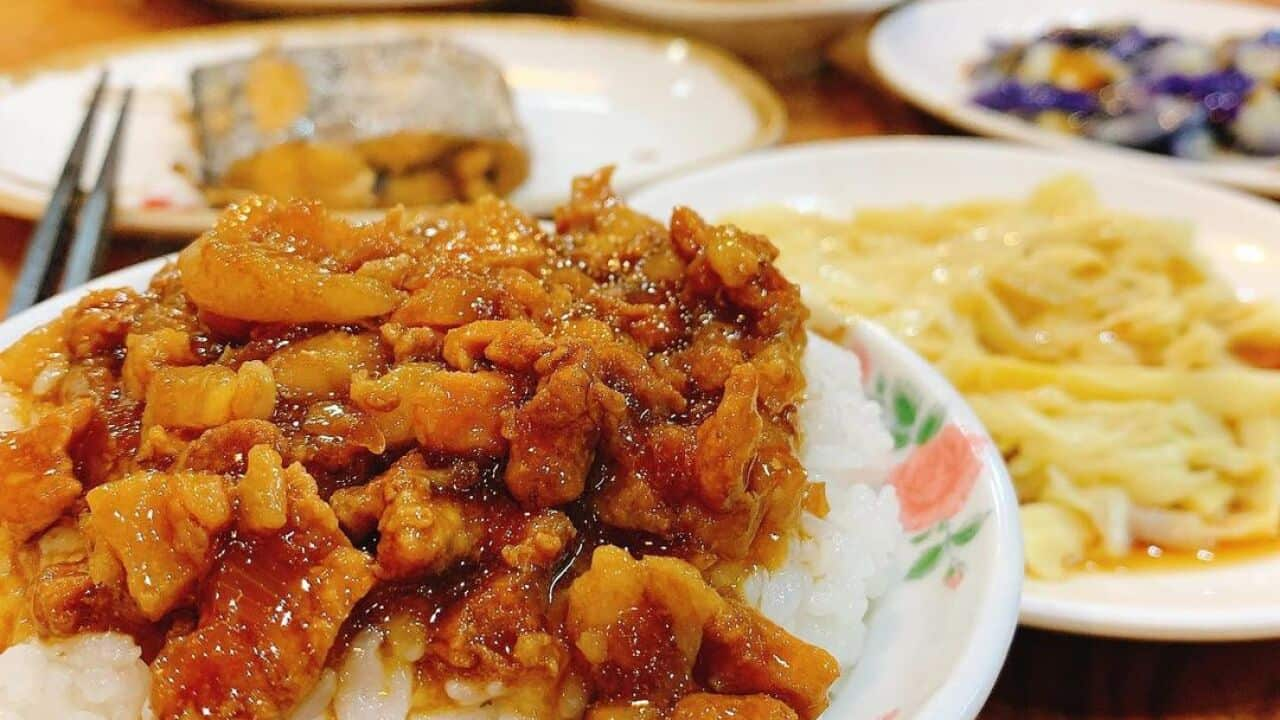How can you make a Sunday lamb roast without mint? Can you even dream of whipping up a pavlova without cream and fresh berries?
It's also hard to stray from classic food pairings in Chinese cuisine. One of my favourite ingredients in my Chinese, or more specifically, Taiwanese, pantry is mei gan chai (梅乾菜).
Mei gan chai, which are not found in your typical Chinese restaurant, but is widely available in Asian grocers, are salty, pickled mustard greens that can only be described as pork's best friend.
Loved by the Hakka people, the ethnic group in Taiwan, salted or brined mustard greens left to dry under a hot sun were a staple of our household when I was growing up. Mum always had these earthy, salty, sweet morsels stored in our Melbourne pantry. On Friday nights when dad worked his late shift, mum prepared lunches to chase our weekend Chinese classes. She included mei gan chai in many of them and I remember when she cooked with it, its sweet aroma would fill our kitchen.
Its sweet aroma would fill our kitchen.
Mei gan chai dishes don't require much effort and commonly feature pork. One such dish is mei gan chai meatballs, which involves lightly rinsing excess salt from the mei gan chai, roughly chopping it up, mixing it into pork mince then rolling the mince into golf-size meatballs. You can steam these bite-sized morsels and pair them with rice.
One of the most popular mei gan-chai dishes is called mei cai kou rou or 梅乾菜燒肉 and features pork belly. Mum is a big fan of this meat cut, so it should come as no surprise that mei cai kou rou is a perennial favourite in our household. To make this fatty, hearty meal, pork belly, like the type found in Taiwan's much-loved pork belly sandwich (割包), is cut into large chunks or slices and braised with mei gan chai, soy sauce, rice wine, dried shiitake mushrooms and Chinese spices.
My Hakka grandma would make mei cai kou rou for New Year celebrations or any family gathering because it signifies longevity and togetherness. The mustards are a symbol of family unity since mei gan farmers only ate the crop with their families. My mum, who never needs an excuse to eat fatty pork belly, would braise mei cai kou rou whenever she felt like eating something reminiscent of her homeland. Given that the dish is even better the day after, mum would make enough to feed a large family and not just four.
The fat on pork belly is an acquired taste and I still remember distant family members discarding it, but millions of Hakka people and others around the world eat the pork in all its glory: meat, skin, fat and all.
For those who want a vegetarian mei gan-chai option, pair it with tofu and steam it with soy sauce, five spice and rice wine. However, nothing beats mei gan chai with pork.
These greens have a flavour unlike any other and are worth seeking out if you get the chance.
TTRY THESE TAIWANESE DISHES

Starting my day with a Taiwanese breakfast sandwich






